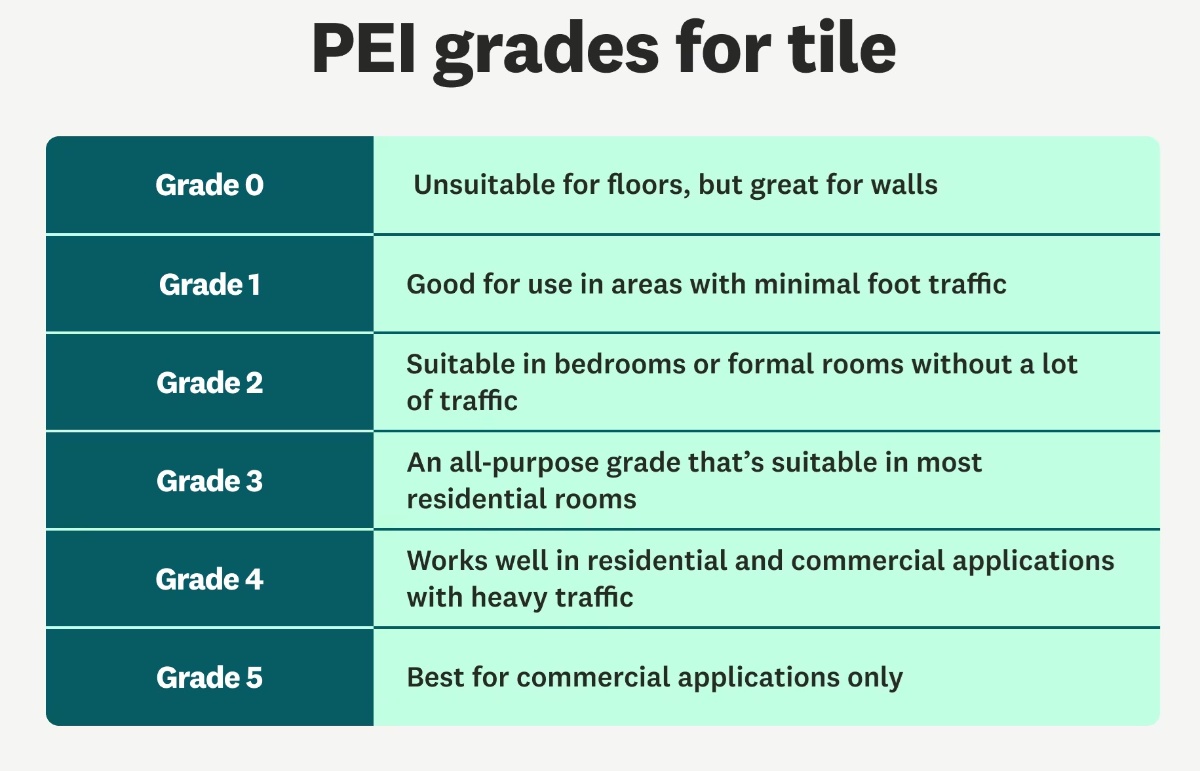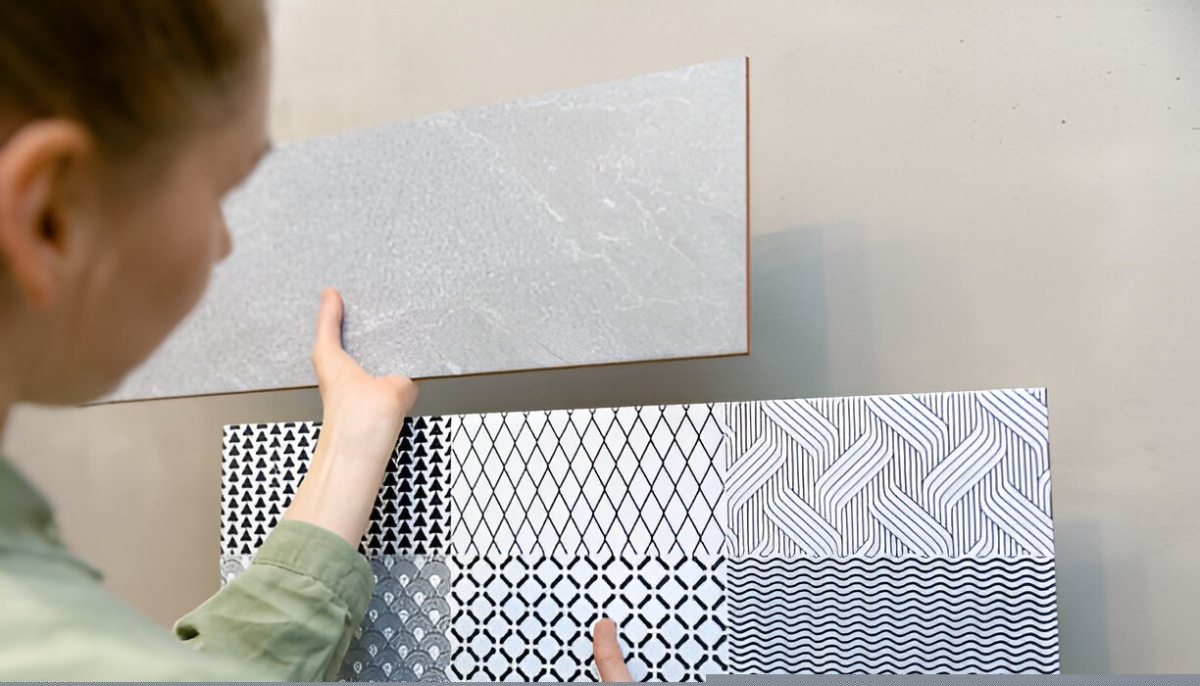What Is PEI Rating?: Choosing the Right Tile
Highlights
-
PEI rating determines a tile’s durability.
-
Tiles are rated on a scale of 0 to 5, with 5 being the toughest.
-
Each room does better with different tile ratings, with high-traffic areas requiring a grade of 3 or higher.
-
Higher PEI-rated tiles typically cost more than lower-rated tiles.
What Is PEI Rating?
When installing new tile, it's essential to understand its durability—and luckily, PEI rating provides a helpful scale for doing so.
A PEI rating, which ranges from 1 to 5, shows a tile's resistance to abrasion according to the PEI Institute's standards, which use machines to mimic different traffic levels and assign a PEI rating. The more abrasion tile can handle, the better suited it is for high-traffic areas, thus, the higher the rating. It's important to note the PEI rating measures a tile's hardness and durability based on its surface layer.
For example, there's a significant difference between installing tile on a shower wall versus the kitchen floor. A kitchen floor gets much more traffic and must be able to withstand more abrasion, or it will wear out faster.
When choosing the best tile for a bathroom floor or kitchen tile, the PEI rating should be one of the top factors you consider.
How PEI Ratings Are Determined
The Porcelain Enamel Institute provides PEI ratings throughout the industry, acting as a clearinghouse between consumers and manufacturers. They aren't authoritarian figures but provide informational ratings to help you choose the right tile for your space.
The PEI uses a rotary abrasion machine that mimics foot traffic and abrasion on porcelain and ceramic tiles. The machine tallies the number of revolutions the tile can withstand before showing abrasion, with the total number of revolutions determining the tile’s PEI rating.
PEI Ratings Broken Down
The point of tiling PEI rating is to determine when a tile's appearance begins to deteriorate, helping consumers and contractors choose the best tiling for the area.
Whether you're looking at kitchen or bathroom tile trends, considering the tile’s PEI rating is essential to long-lasting tile.
Grade 0
Tile with a PEI rating of 0 is only suitable for walls, such as shower surrounds. It cannot withstand foot traffic and shouldn't be used on floors. If you mistakenly use this tile in high-traffic areas, you'll need to learn how to regrout tile floors and possibly replace it often.
Grade 1
Tile with a Grade 1 PEI rating is suitable for flooring only in areas with very little traffic. Like tile with a PEI rating of Grade 0, it's best for shower walls or kitchen backsplashes. If used in areas with foot traffic, it should only be in areas with minimal traffic without shoes, such as a bedroom floor.
Grade 2
As we move up the rating scale, the abrasion resistance of the tile increases. A PEI rating of Grade 2 is best for areas with light traffic, such as bathrooms, bedrooms, or formal rooms that don't receive much traffic.
Grade 3
As you consider tile installation cost, you’ll find most residential tile applications fall under a PEI rating of Grade 3.
Most manufacturers consider this grade “all-purpose,” allowing use on floors, countertops, and walls without worry of premature abrasion. Grade 3 tiles can typically withstand any areas with regular foot traffic.
Grade 4
Grade 4 PEI-rated tiles are suitable not only for residential applications but also for commercial and industrial uses. They work well with heavy residential traffic or medium commercial traffic.
Grade 5
Homeowners typically don't use tiles with a PEI rating of Grade 5. They are reserved for heavy-duty commercial applications. Tiles with a PEI rating 5 have a heavy-duty finish unsuitable for certain rooms in the home.






